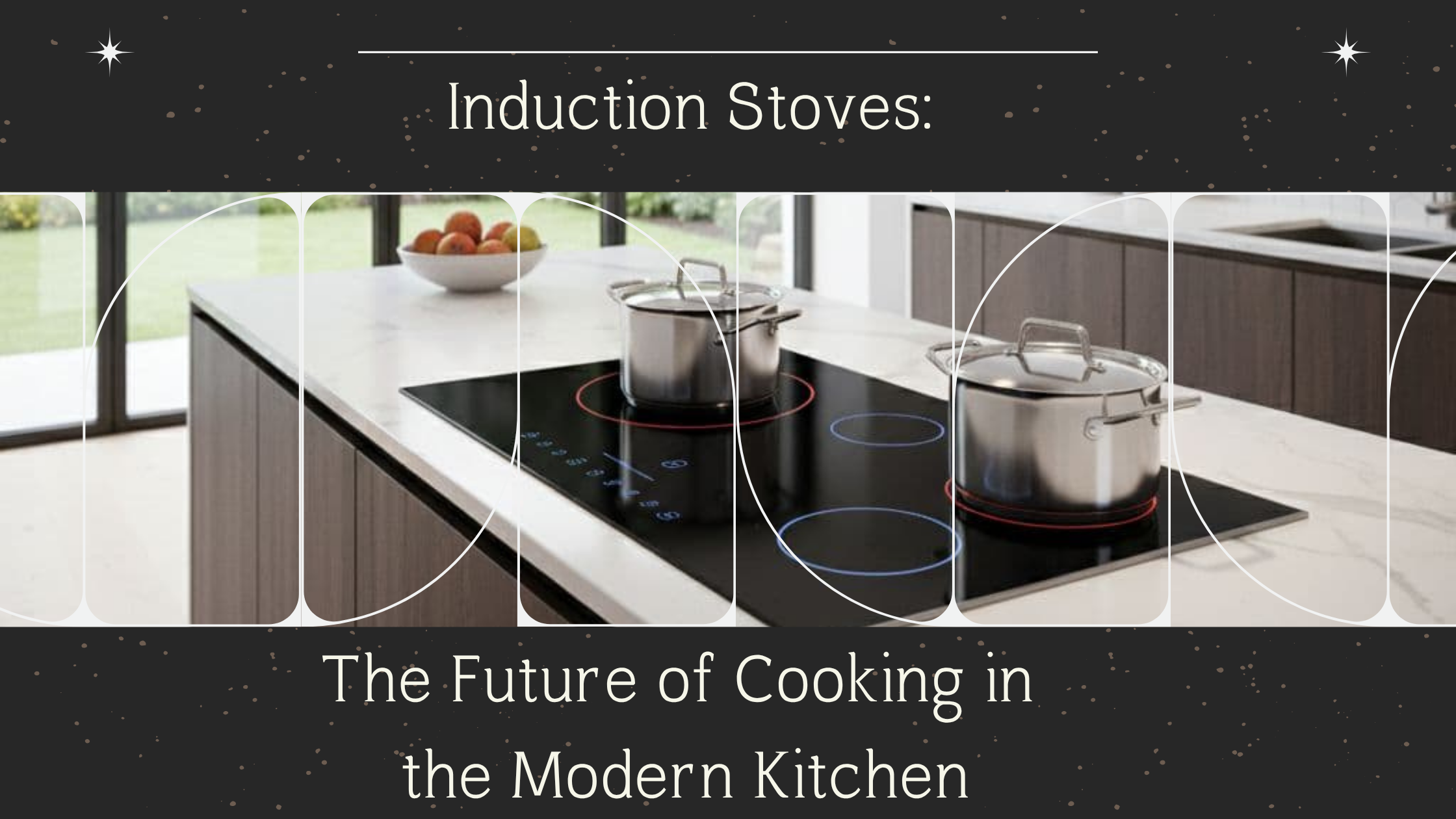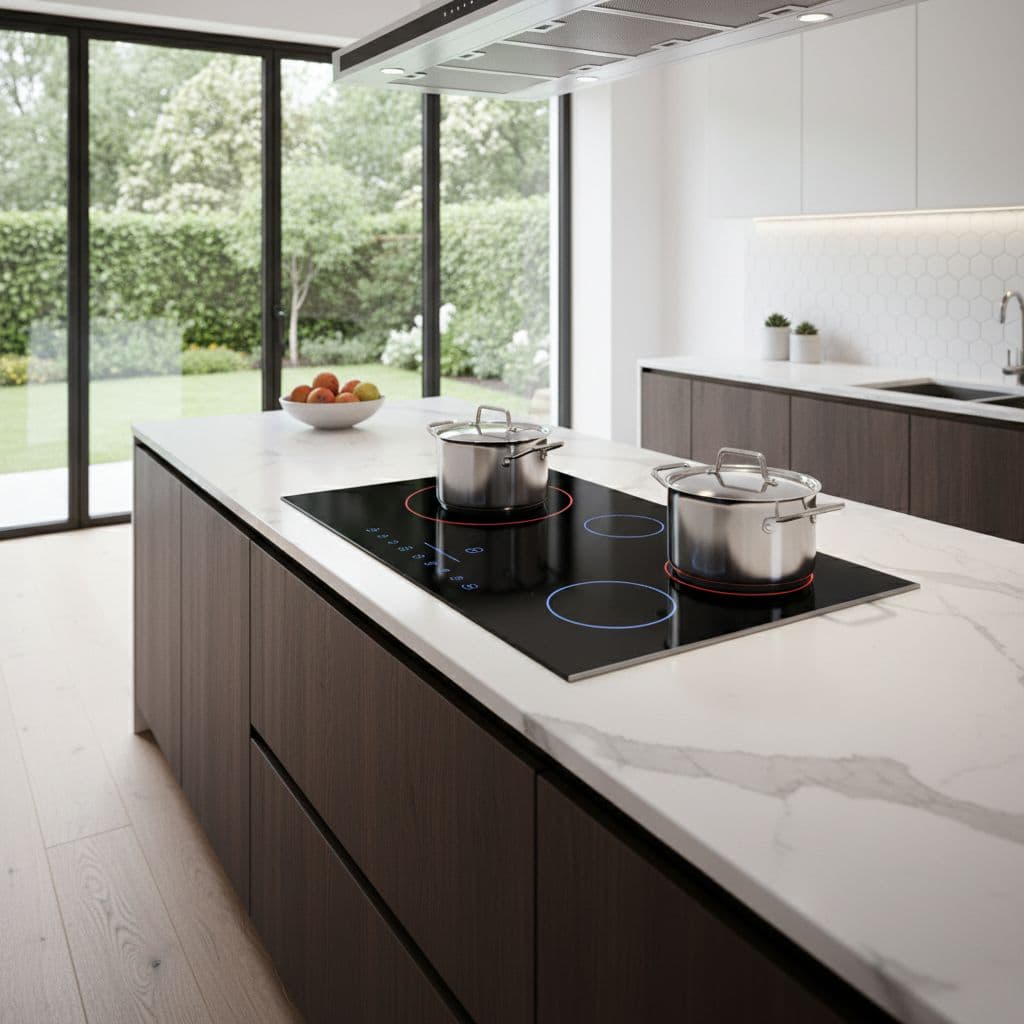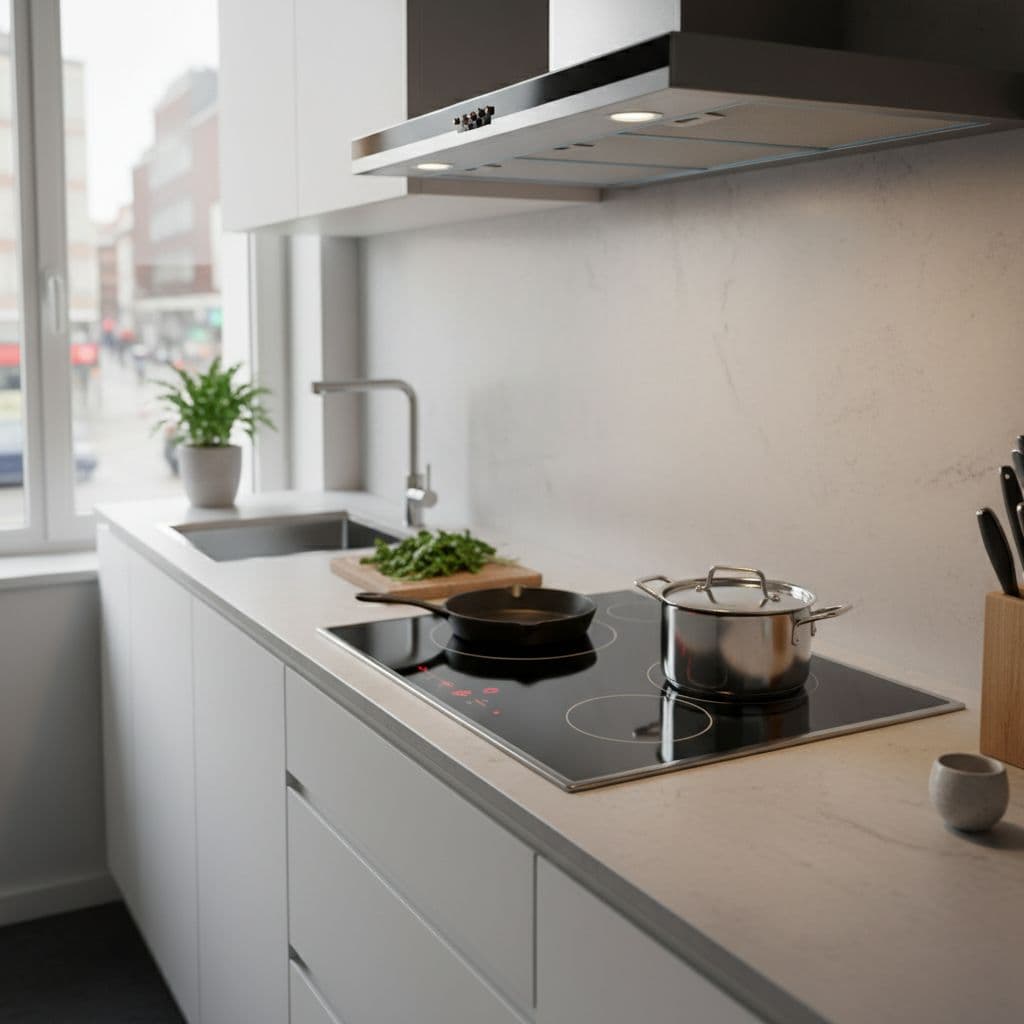By using our website, you agree to the use of cookies as described in our Cookie Policy
The Boss’s Daughter
Induction Stoves: The Future of Cooking in the Modern Kitchen

Induction Stoves: The Future of Cooking in the Modern Kitchen
If you’ve been shopping for a new range lately, you’ve probably noticed a big buzzword: induction. These sleek cooktops are popping up in remodels across the Bay Area, and for good reason. But what exactly is induction—and is it the right fit for your kitchen?
At Toupin Construction, we’ve helped hundreds of East Bay homeowners design kitchens that balance beauty, function, and future-proof choices. Induction stoves are one of those choices—and whether you’re remodeling in Rossmoor, Walnut Creek, or anywhere else, it’s worth taking a closer look.
Key Takeaways
-
Magnetic precision: Induction heats the pan directly, making it faster and more responsive than gas or electric.
-
Cookware check: Only magnetic pans work. Test with a magnet—if it sticks, you’re good.
-
Electrical readiness: Most induction stoves require a 240V outlet; plan upgrades during your remodel.
-
Safe & cool: Surfaces stay cool to the touch, reducing burns and keeping open-concept kitchens more comfortable.
-
Bay Area bonus: Induction aligns with California’s all-electric goals and adds resale appeal to East Bay homes.

What Is Induction Cooking?
Induction stoves use magnetic energy to heat your cookware directly—meaning the pan gets hot, not the cooktop surface.
It sounds high-tech, but it’s simple science. Beneath the glass is an electromagnetic coil that reacts with magnetic metals (like iron or steel) to generate heat instantly.
Here’s what that looks like in real life:
-
Water boils in record time.
-
Temperature changes are nearly instant.
-
The cooktop itself stays cool to the touch.
Induction isn’t new—it’s been popular in Europe for decades—but it’s gaining traction fast in California, especially as local building codes shift toward energy-efficient, all-electric homes.
The Pros of Induction Stoves
✅ Super Fast Cooking – Boils water and sears food faster than gas or electric.
✅ Precise Control – Adjust heat instantly, like turning a gas flame up or down.
✅ Safety – The surface stays cool, reducing burn risk—ideal for kids or grandkids in Rossmoor.
✅ Easy to Clean – No grates or burners; just wipe the smooth glass top.
✅ Energy Efficient – Uses less energy and keeps your kitchen cooler.
If you’re designing a kitchen with energy awareness in mind, you might also like our post on Why Smart Technology in Bathrooms Is a Growing Trend. Many of those same principles—efficiency, safety, and comfort—apply to induction cooking, too.
The Cons of Induction Stoves
⚠️ Cookware Compatibility – Only magnetic pans work (more on that below).
⚠️ Higher Upfront Cost – Induction ranges cost more than standard electric models.
⚠️ Learning Curve – The speed and sound can take some getting used to.
⚠️ Power Source – Most require a 240V outlet, which might mean electrical upgrades.
(For more on safe electrical planning during a remodel, check out Kitchen Electrical Codes Every Homeowner Should Know.)
Induction vs. Gas vs. Electric
Here’s a quick breakdown:
| Type | Pros | Cons |
|---|---|---|
| Gas | Powerful and familiar with visible flame control. | Less efficient, emits heat, and facing restrictions in California. |
| Electric | Affordable and widely available. | Slower response, uneven heat. |
| Induction | Fast, precise, and energy-efficient. | Requires compatible cookware and 240V outlet. |
In many East Bay remodels, homeowners are opting for induction paired with quartz or solid-surface countertops for a sleek, modern finish. (You can explore options in our Ultimate Guide to Countertop Materials.)
A Thanksgiving Story: When Induction Met Blue Pots
To really highlight one of induction’s quirks, here’s a family story.
When my parents moved into their new Walnut Creek home, my dad was in the hospital and scheduled to be released on Thanksgiving morning. My mom—determined to host dinner anyway—was ready with her dream kitchen: custom blue KraftMaid cabinets and a brand-new induction stove.
She had even bought a gorgeous set of matching blue pots and pans. But when she placed one on the stove…nothing happened. Turns out, they weren’t induction-compatible.
With family arriving and Dad just home, she had to improvise fast. Downstairs sat an old electric stove in the unfinished basement. She lugged her beautiful pots down, cooked the entire meal there, and somehow pulled off Thanksgiving.
Dinner was saved, and we all learned the same lesson we now share with clients: always check your cookware before the big day.
Cookware Compatibility: What You Need to Know
That story isn’t unique—we’ve heard it from clients, too. The #1 surprise with induction is cookware.
The Magnet Test:
Grab a magnet and stick it to the bottom of your pan.
If it sticks, it works. If it slides off, it doesn’t.
Works with:
-
Cast iron
-
Stainless steel (most types)
-
Some enameled cookware with magnetic bases
Does not work with:
-
Aluminum
-
Copper
-
Glass
If you’re upgrading to induction, factor in a new cookware set if needed. Many brands now label pans as “induction-ready,” so check before buying.
Electrical Requirements
Induction stoves are typically 240V appliances, meaning you’ll likely need an upgraded outlet or dedicated circuit.
This is a crucial step to plan early in your remodel, especially if you’re updating multiple kitchen systems like lighting, outlets, and appliances.
At Toupin Construction, our electricians make sure your setup meets California Electrical Code standards and that panel capacity can handle the upgrade. For more on this, see California-Specific Electrical Codes.
Induction in East Bay Homes
We’re seeing more homeowners across the East Bay—and especially in Rossmoor—embrace induction for its safety and comfort.
Rossmoor Residents: love that induction cooktops stay cool to the touch—ideal for visiting grandkids.
Walnut Creek Homes: induction supports California’s shift toward all-electric living.
Families with Open Layouts: enjoy that induction doesn’t heat up the kitchen the way gas does, keeping the whole home more comfortable.
If you’re remodeling in a condo or community, note this:
Rossmoor Tip: Appliance upgrades often require HOA approval and sometimes additional city permits. A contractor who knows the system (hi, that’s us ????) can help you avoid delays.
Cost Considerations
While induction ranges can cost more upfront, they often balance out through lower energy use and efficiency gains. Add in easier cleaning and longer lifespan, and many homeowners find the investment worth it.
Budgeting for your remodel? Download our East Bay Kitchen Remodel Budget Planner to help organize your costs and priorities.
Tips for Making the Switch
Test Your Cookware Early – Do the magnet test before you buy.
Plan Electrical Work – Discuss 240V outlet requirements early.
Think Resale – Induction adds appeal for energy-conscious buyers.
Practice Before Hosting – Try everyday cooking before a big event.
Keep a Backup Option – A small plug-in burner can save the day.
Frequently Asked Questions About Induction Stoves
How does an induction stove work?
Induction uses magnetic fields to heat the cookware itself, not the glass surface. The result? Fast heating, quick response, and a cooler cooking surface.
What cookware works on induction?
Cast iron, stainless steel, and magnetic-based enamel cookware all work. Aluminum, copper, and glass won’t unless they include a magnetic layer.
Quick check: If a magnet sticks to the bottom, it works.
Do I need electrical upgrades for induction?
Most induction ranges need a 240V circuit. If your home doesn’t have one, plan the upgrade during your remodel. Your contractor can check your panel’s capacity and handle permits if needed.
How does induction compare to gas and electric?
Gas provides visible flame control but is less efficient and being phased out in many new builds. Electric is familiar but slower to heat. Induction offers precision, speed, and energy savings.
Is induction good for East Bay homes?
Absolutely. It aligns with California’s clean energy goals and is popular among Rossmoor and Walnut Creek homeowners for its safety, style, and efficiency.
Final Thoughts
Induction stoves aren’t just a trend—they’re the future of cooking in California kitchens. They’re safe, efficient, and perfect for modern remodels where function meets design.
And as my mom learned on Thanksgiving, the only surprise you want in your new kitchen is how much you love it—not whether your pots will boil water.
If you’re considering an induction stove in your next remodel, our team at Toupin Construction can help make it a seamless part of your design.
From cabinetry to countertops and electrical upgrades, we’ll help every piece work together beautifully.
Because the heart of your home deserves a kitchen that’s as smart—and stylish—as you are.
‹ Back



Comments